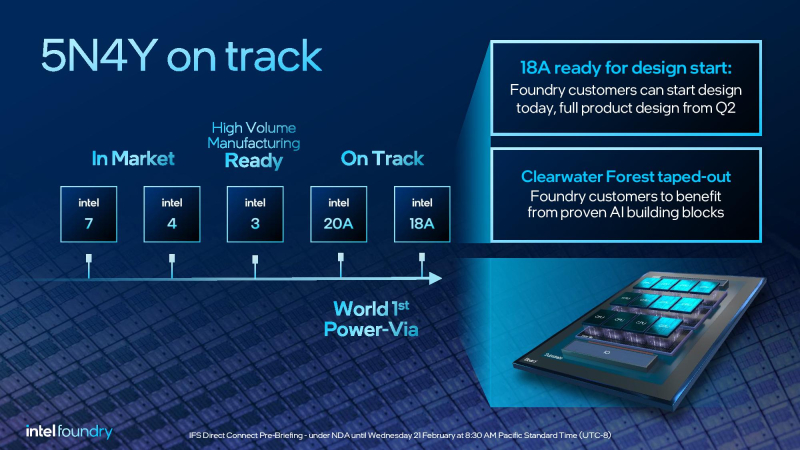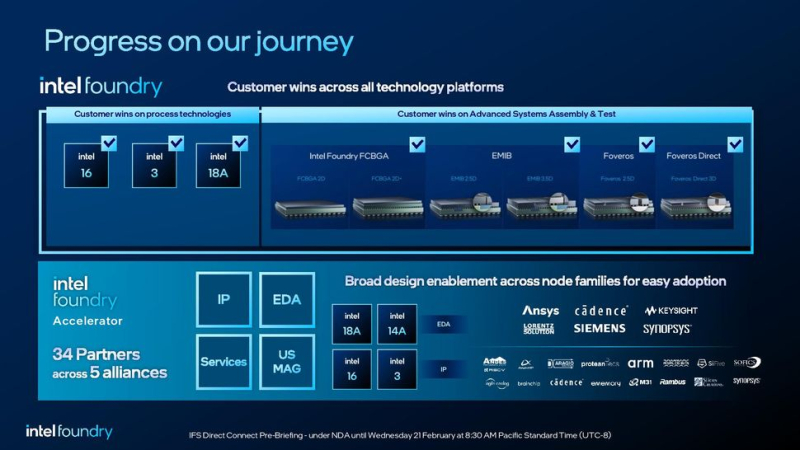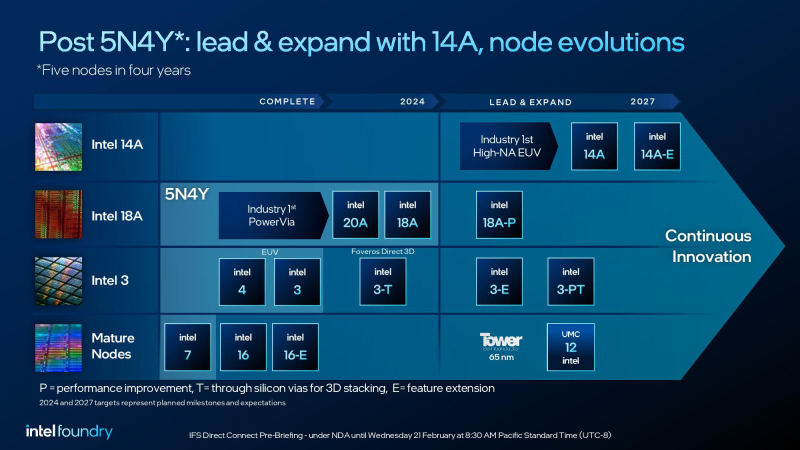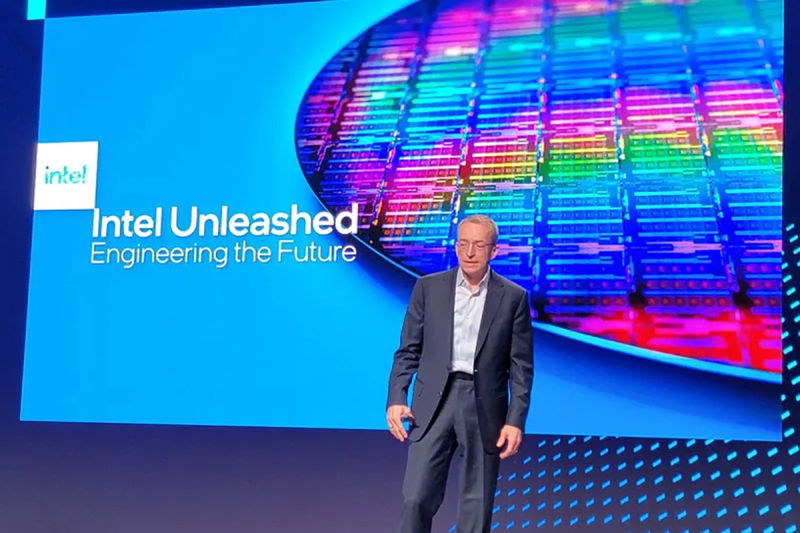At the IFS Direct Connect 2024 event, Intel unveiled a new roadmap that includes a new 14A process node, the industry's first to use High-NA EUV technology, and wafer production of its Clearwater Forest processors on the 18A process node. Intel is realizing its own goal of launching five process technologies in four years (5N4Y). Microsoft also announced the creation of its own chips based on the Intel 18A process.
Intel has changed the name Intel Foundry Services to Intel Foundry. Intel's manufacturing goal is to become the world's second-largest “systems factory” of chips by 2030. This includes not only producing different types of processors, but also providing customers with packaging and connectivity solutions and even helping with cooling solutions. Intel Foundry will serve both external customers and Intel's internal needs, with the goal of serving both equally with a sustainable supply chain.

Intel announced new capabilities in the Intel Foundry Advanced System and Test (ASAT) portfolio that will help customers build their own AI chips using Intel's full suite of technologies.
Intel 7 and Intel 4 technologies are already available on the market, and Intel 3 is ready for mass production. The 20A (2 nm) and 18A (1.8 nm) processes are ready to create the industry's first chips with the PowerVia power system, which provides optimized power routing for improved performance and transistor density, and the first with RibbonFET gate-all-around technology ( GAA), which provides better transistor density along with faster switching, but in a smaller area. The Intel 18A is now ready for design with 0.9 PDK from Intel EDA (design software) and partners, with the full 1.0 PDK coming in April/May.

The final design of Intel Clearwater Forest processors is ready for production. Clearwater Forest is the company's first large-scale 18A chip. The Clearwater Forest chip consists of 18A CPU tiles, which are then bonded together to the Intel 3 base die using 3D Foveros packaging technology.
DevOps for system administrators. The course will help you incorporate the principles of DevOps, progressing to automation, start writing infrastructure code, and show you that you can do it safely. Get to know more
Clearwater Forest is the first large-scale processor to use Universal Chiplet Interconnect Express (UCIe), a new industry interface for connecting chips together. UCIe is a key advancement that cannot be ignored: the interface is supported by Intel, AMD, ARM, NVIDIA, TSMC, Samsung and 120 other manufacturers to standardize direct connections between chiplets with open source design. This reduces costs and creates a broad ecosystem of proven combination ICs from many manufacturers.
Next, the Post-5N4Y diagram shows the Intel 14A process. This will be the first process in the industry to use ASML's High-NA EUV lithography tool. This will allow manufacturers to print smaller chips and, according to Intel, provide greater performance. Intel is the first company in the industry to receive the advanced High-NA tool, while TSMC is said to have delayed the tool until 2030 due to cost concerns.

Intel will also equip Intel 7, Intel 3 and Intel 16 process technologies with new “line extensions.” Intel plans to ship a new process technology every two years and then expand lines every two years, similar to its old Tick-Tock model. These string extensions will be indicated by new suffixes.
The P suffix indicates a new version of the node with improved performance, the T suffix is for TSV-equipped nodes that can be used with a hybrid connection/3D Foveros, and the E suffixes indicate special new features such as customizable workers voltage ranges/ranges. Intel will also use PT processes, which will indicate both performance and special features.
In the coming years, Intel will receive a new process technology, Intel 12, which will be the result of manufacturing cooperation with UMC.
The Intel Foundry Services Accelerator program helps chip designers easily adapt Intel manufacturing technologies. This program now includes 34 partners spread across four alliances: IP, EDA, Design Services and USMAG (United States Military, Aerospace and Government). This broad roster of partners includes EDA industry heavyweights such as Ansys, Cadence, Synopsys, Siemens and Keysight, as well as a wide range of IP partners such as Arm, RISC-V, SiFive, Rambus and others.
For more extensive coverage and some analysis, go to Tom’s Hardware.
The competition for ITS authors continues. Write an article about the development of games, gaming and gaming devices and win a professional gaming wheel Logitech G923 Racing Wheel, or one of the low-profile gaming keyboards Logitech G815 LIGHTSYNC RGB Mechanical Gaming Keyboard!

